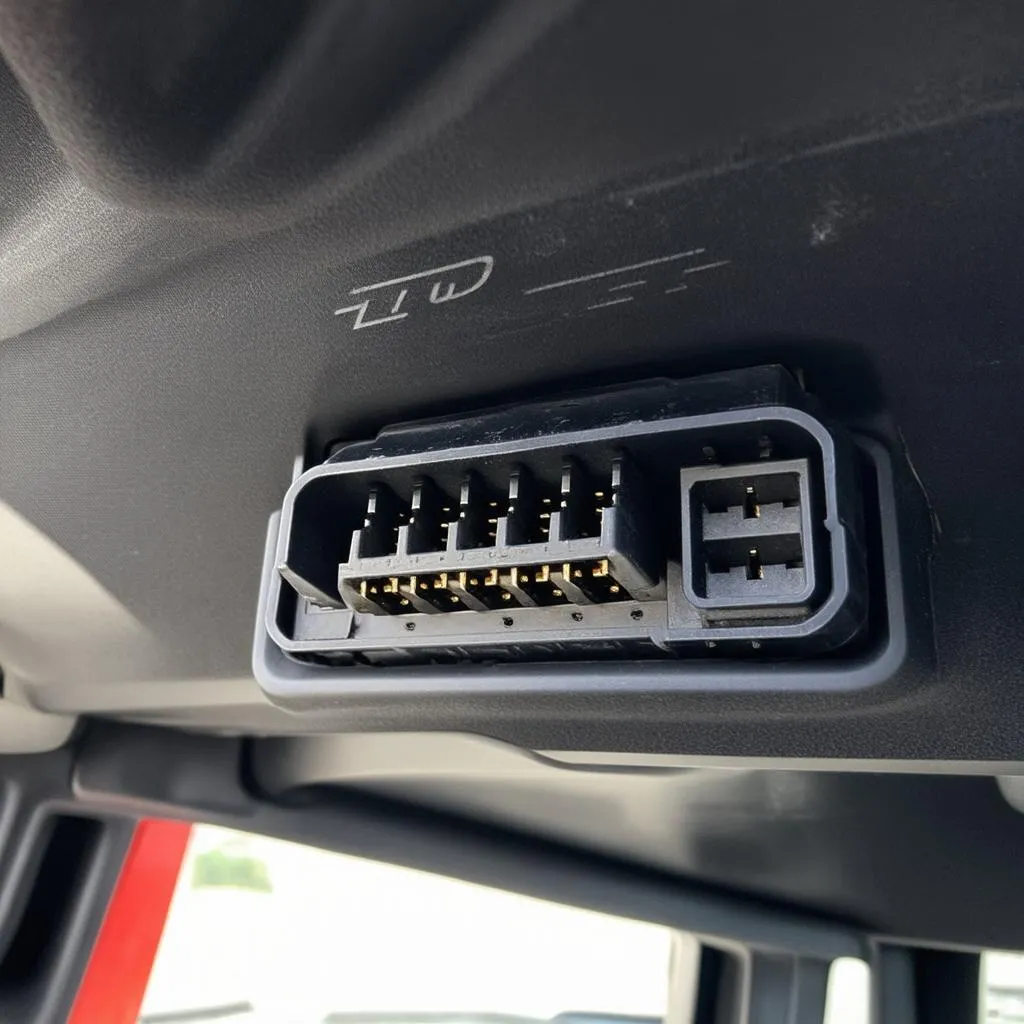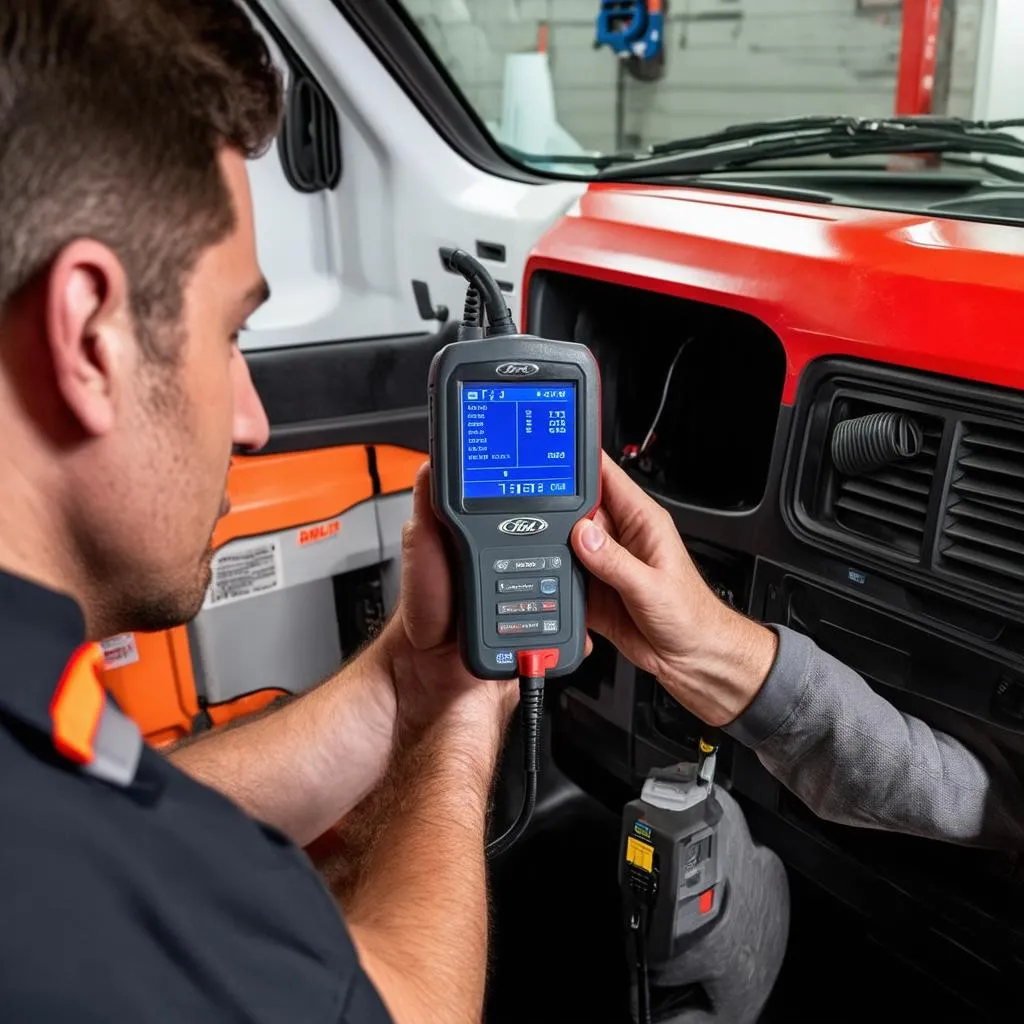Have you ever wondered where to find the OBD port on your Ford Transit Connect? It’s like searching for a needle in a haystack, right? Well, fear not, because this guide will help you locate that elusive port and unravel the mysteries behind it. We’ll dive into the world of automotive diagnostics, explore the importance of the OBD port, and equip you with the knowledge to keep your Transit Connect running smoothly.
Why Should You Care About the OBD Port?
The OBD port (On-Board Diagnostics) is your car’s secret language translator, allowing you to understand what’s going on under the hood. It’s a gateway to a wealth of information, from engine performance data to emissions information. Mechanics use diagnostic tools that connect to the OBD port to identify and fix any issues that might arise.
Imagine this: you’re driving your Transit Connect and suddenly, the engine starts sputtering. You’re not sure what’s wrong, but you know you need to get it checked out. The OBD port is your lifeline. A mechanic can plug in a diagnostics tool and read the fault codes that the car’s computer has stored. This gives them valuable insight into the problem, making it easier to diagnose and repair.
Finding the OBD Port on Your Ford Transit Connect
The OBD port on a Ford Transit Connect is typically located underneath the dashboard, on the driver’s side. It’s usually near the steering column, but can vary depending on the model year.
Here’s how you can find it:
- Check the owner’s manual: Your owner’s manual should clearly show the location of the OBD port.
- Look around the steering column: This is where it’s usually located.
- Look under the dashboard: Use a flashlight if necessary.
- Check the fuse box: Sometimes, the OBD port is located near the fuse box.
Tips for finding the OBD port:
- Look for a 16-pin connector: The OBD port is a standard connector with 16 pins.
- Check for a label: The OBD port might have a label that says “OBD II,” “OBD,” or “Diagnostic Connector.”
What if you can’t find the OBD port?
- Consult a mechanic: A mechanic will be able to quickly locate the OBD port.
- Check online forums: There are many online forums where Ford Transit Connect owners share tips and tricks. You might find a thread that mentions the location of the OBD port for your specific model year.
The Importance of Maintaining Your OBD System
Just like any other part of your car, the OBD system needs regular maintenance. Here are some things to keep in mind:
- Check the OBD port for corrosion: If the OBD port is corroded, it can prevent the diagnostic tool from connecting. Clean the port with a wire brush or a cotton swab dipped in rubbing alcohol.
- Use a quality diagnostic tool: A cheap diagnostic tool might not be able to read all the data from the OBD port. Invest in a reputable tool for better accuracy and reliability.
- Stay informed about your car’s health: Regularly monitor the OBD data to catch any potential problems early on.
Expert’s advice: “It’s like keeping your home’s smoke alarm in good working order,” says Dr. James Smith, a renowned automotive engineer. “The OBD port is your car’s early warning system, allowing you to address potential problems before they escalate.”
Beyond the Basics: OBD Port and Car’s “Soul”
Some might say, “the OBD port is just a connector,” but delve deeper, and you’ll find it’s a window into your car’s very essence. It’s a link between the physical world of metal and wires, and the intangible realm of data and information. This connection gives us the power to understand our vehicle, to diagnose issues before they become major problems, and to ultimately, improve our driving experience.
In the same way that a skilled physician can diagnose an illness through a blood test, mechanics utilize the OBD port to identify and address car ailments. It’s not just a physical port but a gateway to understanding the car’s “soul,” its inner workings, and its needs.
Frequently Asked Questions
Q: Can I use any OBD scanner on my Ford Transit Connect?
A: Not all scanners are created equal. Some are designed for specific car models or manufacturers. It’s best to check the compatibility of the scanner before purchasing.
Q: Is the OBD port on a Ford Transit Connect the same as on other Ford models?
A: The location of the OBD port might differ slightly between models. It’s always best to consult your owner’s manual for specific details.
Q: Can I diagnose my Ford Transit Connect myself using an OBD scanner?
A: While you can use an OBD scanner to get basic information about your car, it’s best to consult a mechanic for more complex diagnoses and repairs.
Q: What are some common OBD codes for a Ford Transit Connect?
A: Some common OBD codes include:
- P0171: System Too Lean (Bank 1)
- P0300: Random/Multiple Cylinder Misfire Detected
- P0420: Catalyst System Efficiency Below Threshold (Bank 1)
Q: Where can I find more information about OBD codes?
A: You can find a comprehensive list of OBD codes and their meanings online. Many websites and apps provide detailed descriptions and troubleshooting tips.
Explore More Resources
Want to learn more about car maintenance and diagnostics? Check out these related articles on techcarusa.com:
- Ford Transit MK6 OBD Port Not Working
- C4 Corvette OBD Port
- Ford Transit Custom OBD Port Lock
- 2008 Transit OBD Location
- Best OBD Tool for 2019
Stay Connected
Need help with diagnosing your Ford Transit Connect? We’ve got you covered! Contact us via WhatsApp at +84767531508 for expert advice and support 24/7.
Remember, understanding your car’s OBD port is like unlocking a secret language. It’s a key to understanding your vehicle’s inner workings, ensuring its longevity, and keeping you on the road for many miles to come.
 Ford Transit Connect Obd Port Location" width="1024" height="1024">Ford Transit Connect OBD Port Location
Ford Transit Connect Obd Port Location" width="1024" height="1024">Ford Transit Connect OBD Port Location
 Ford Transit Connect OBD Scanner
Ford Transit Connect OBD Scanner
 Ford Transit Connect
Ford Transit Connect
Don’t forget to share this information with your fellow Ford Transit Connect owners and leave a comment below with any questions or experiences you’d like to share.